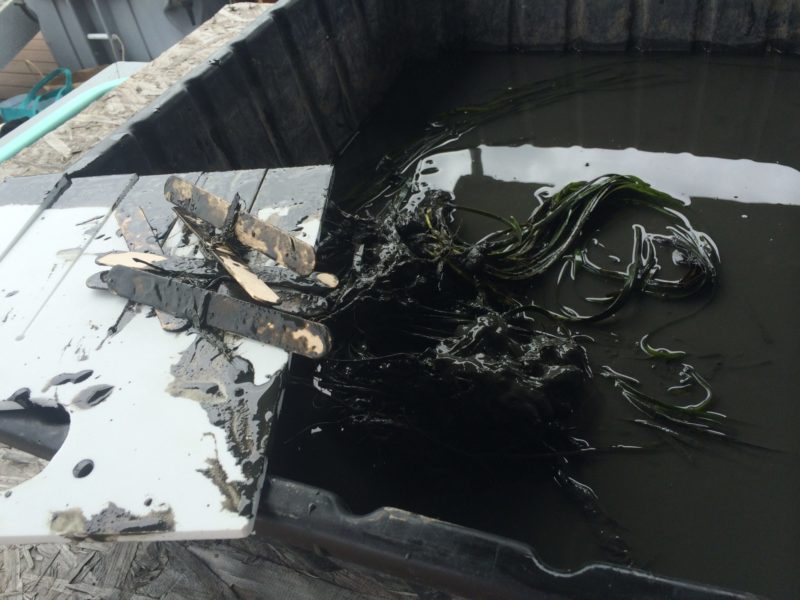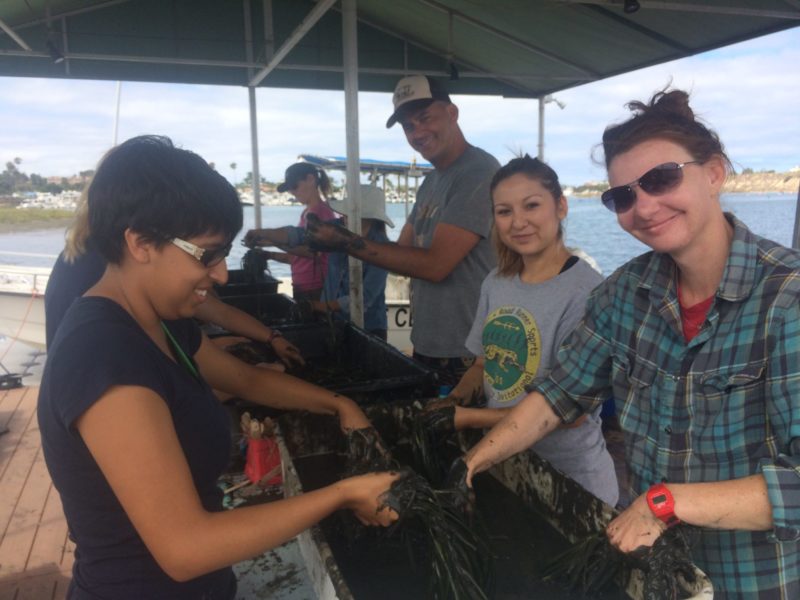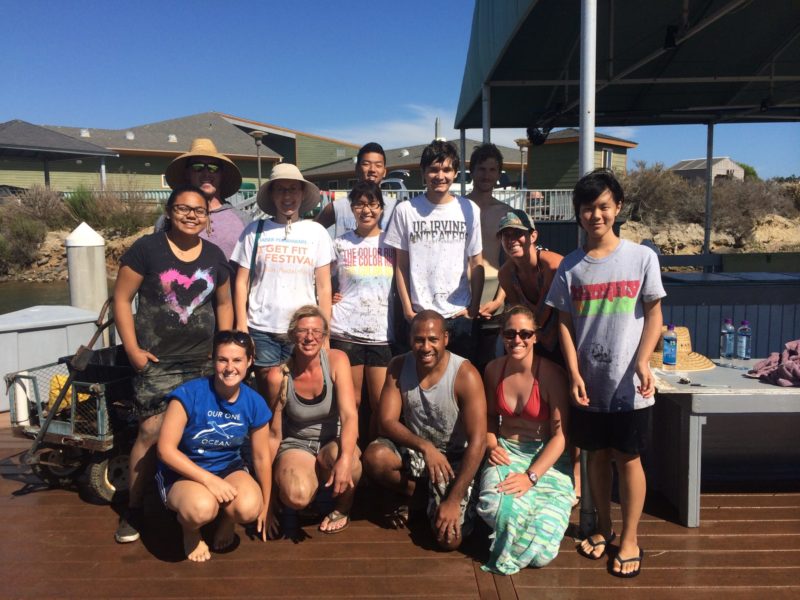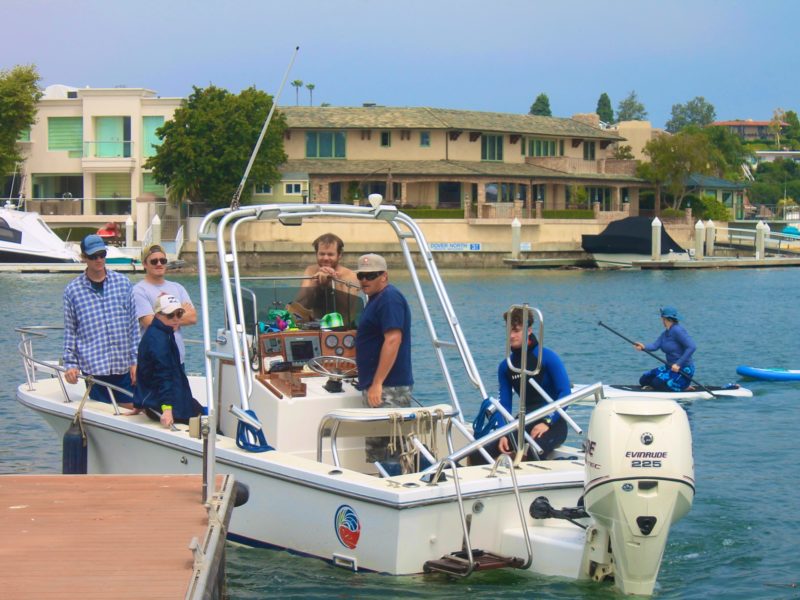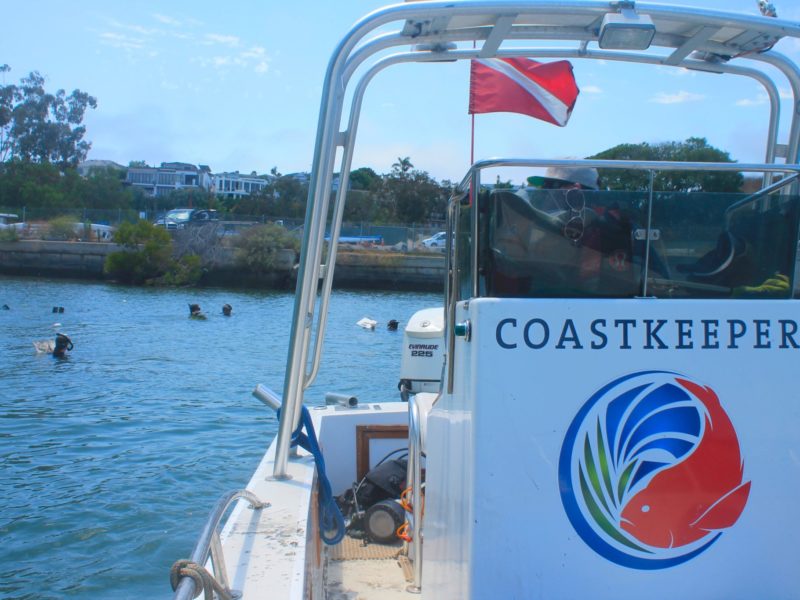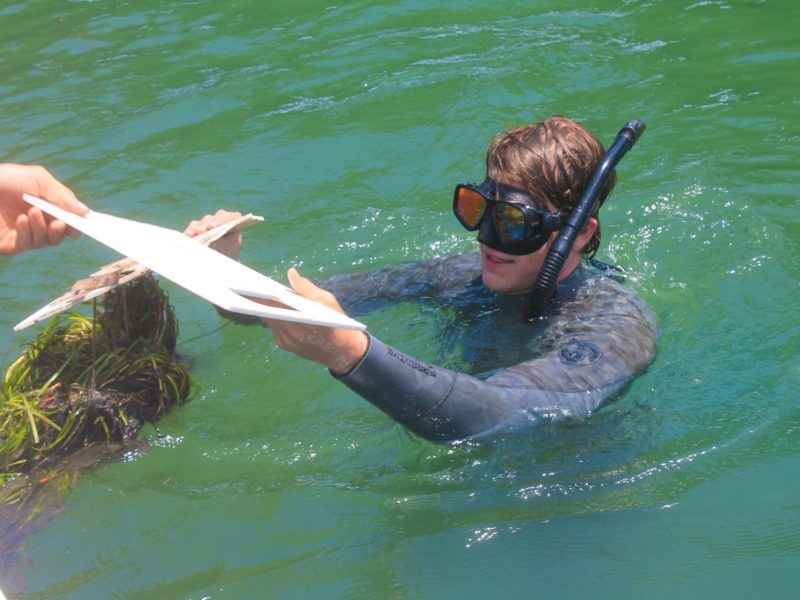What is Eelgrass?
Eelgrass is one of 60 species of sea grasses found in shallow coastal areas worldwide. They are referred to as foundation species because they are able to create an entirely new habitat. Once eelgrass is established many other species (juvenile fish, lobsters and shellfish) that rely on this plant for food and habitat will also begin to inhabit the area.
Eelgrass is neither a true grass nor seaweed, but a flowering plant that grows entirely submerged in water. Eelgrass has a stem, leaves, roots and a rhizome, and produces seeds, unlike seaweed. They are mostly found in muddy or sandy sediments in estuaries, bays and shallow subtidal zones of coastal areas.
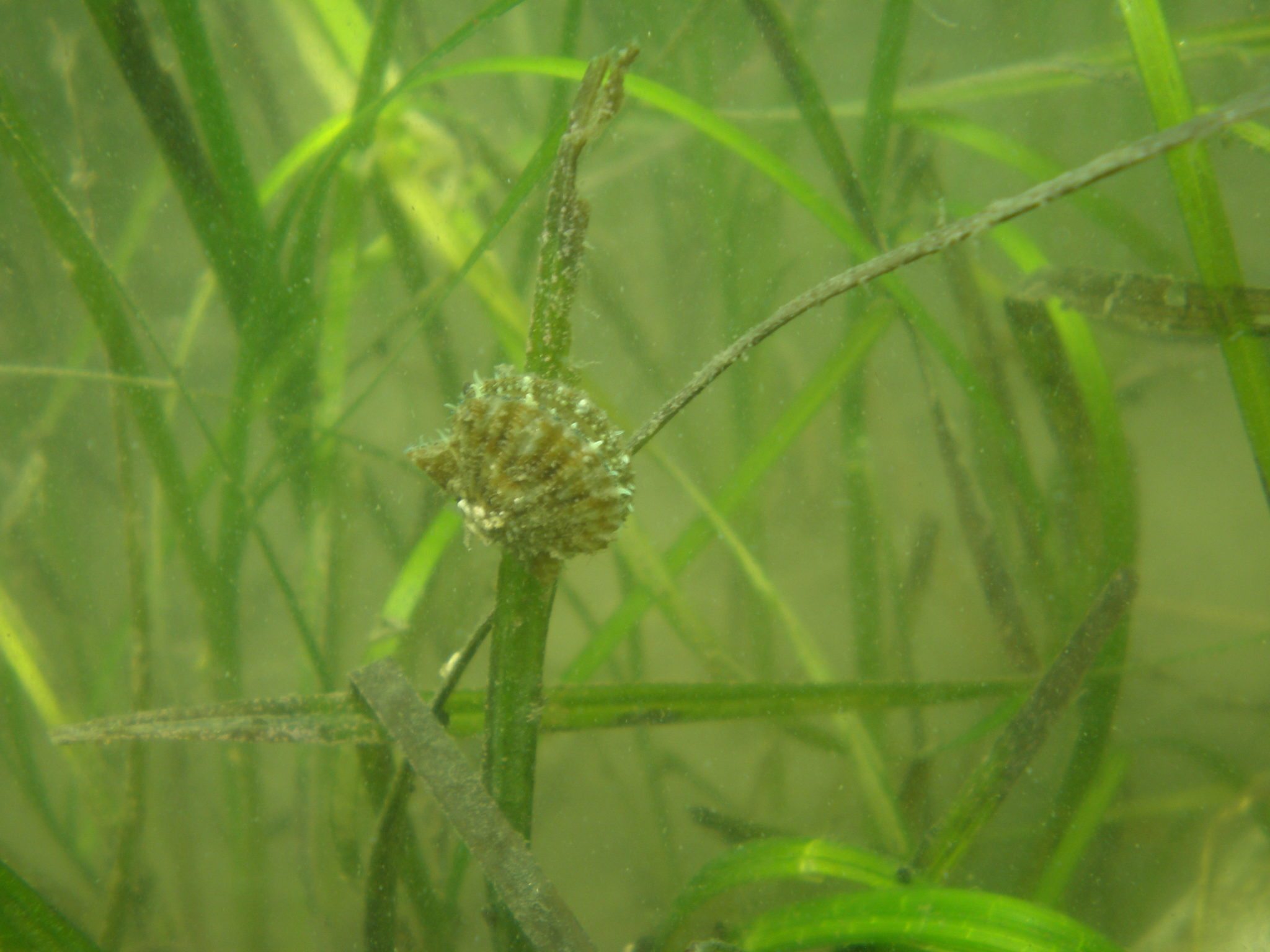
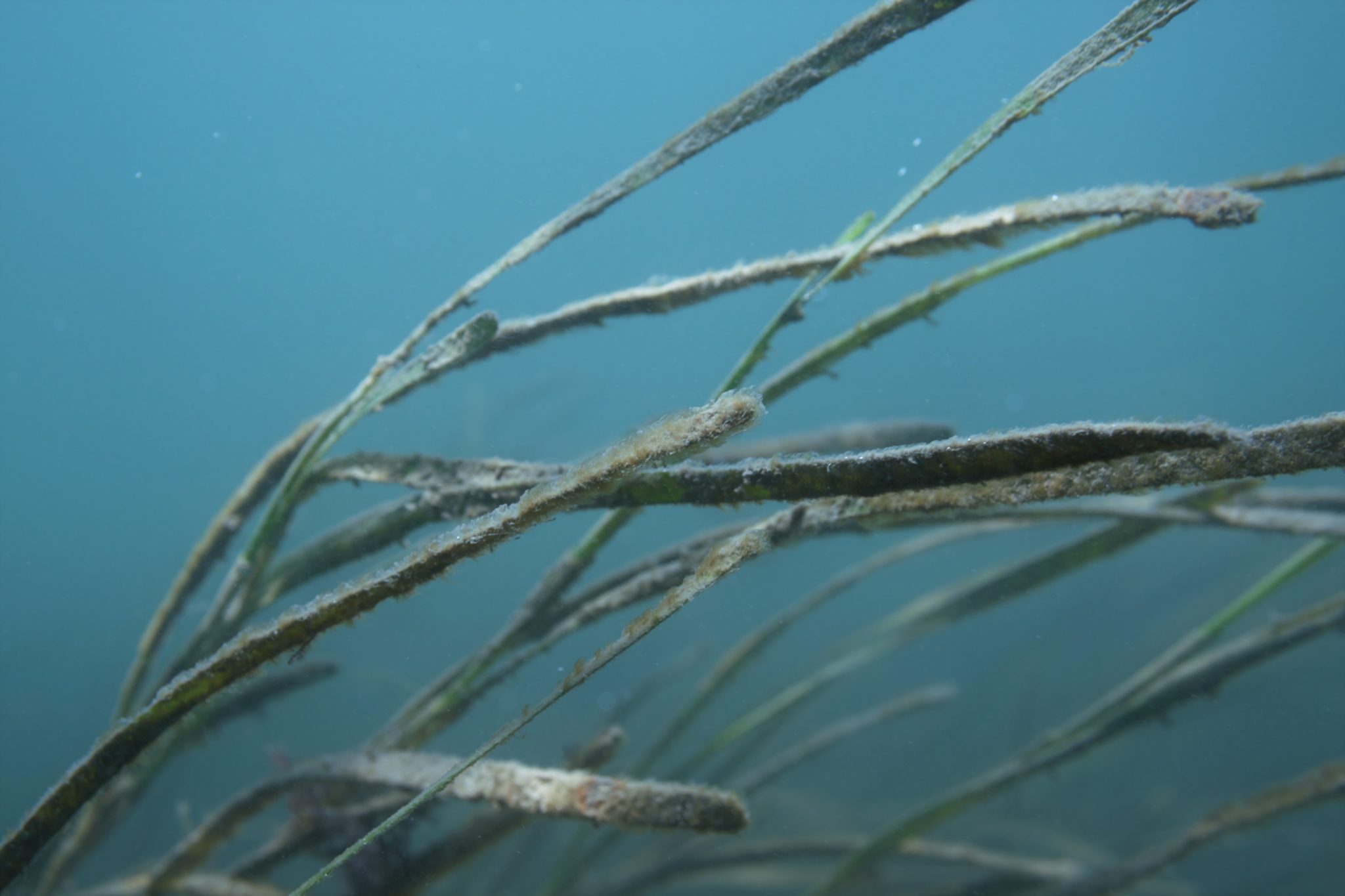
Why is Eelgrass Important?
Eelgrass beds provide many important ecosystem functions, including:
Oxygen Production
Through photosynthesis, eelgrass oxygenates the surrounding water and transfers oxygen deep within the surrounding sediment, making it inhabitable for other organisms while producing energy for itself in the form of glucose. Eelgrass also removes excess carbon dioxide from the environment and may be an important source of carbon sequestration.
Habitat
Eelgrass beds are important nursery grounds and provide refuge from predation for many species of fish and invertebrates. Many species actually lay eggs on the eelgrass leaves for protection until they hatch. Eelgrass can also provide shade for some species, reducing the occurrence of overheating.
Food
Eelgrass is food for herbivores such as turtles, Brant geese and small invertebrates. Dead eelgrass provides organic matter for bottom-dwelling decomposers such as bacteria that break it down into forms of energy utilized by other organisms, including eelgrass.
Nutrient Cycling
Nutrients such as phosphates and nitrates from fertilizers enter our bays and estuaries through storm channels or natural waterways. These nutrients are essential to life, but in excess they can reduce water quality and stimulate the growth of harmful algal blooms which can reduce the amount of oxygen in the water as they decompose.
Threats to Eelgrass Habitat
Eelgrass is influenced by both natural and manmade factors.
Man-Made Factors
Environmental conditions
Eelgrass grows in shallow waters which make it particularly vulnerable to land-based activities such as coastal development, boating, aquaculture, and fishing.
Although eelgrass is resilient and recovers from natural disturbance, eelgrass may not be able to adapt quickly enough to the rapidly changing environmental conditions caused by humans.
Accelerated algae growth
Human activities tend to accelerate the rate at which nutrients, both organic and inorganic, enter the ocean. When nitrate levels increase, there is an increase in growth and abundance of algae. This excessive growth of algae, referred to as an “algal bloom” or “red tide,” may out-compete eelgrass for nutrients, space and sunlight.
Natural Factors
Invasive algae
Caulerpa taxifolia is a type of algae not native to California but has been found in certain waters along the coast since 2000. Caulerpa readily adapts to certain environments, especially where eelgrass thrives, and competes for space, light and nutrients.
Without any natural predation, Caulerpa can continue to grow unchecked. Because loss of eelgrass would harm the population of many organisms who depend on them, the state of California has taken up an active campaign to prevent Caulerpa from establishing itself in coastal waters.
Reduced light availability
Eelgrass requires more light than most marine plants, such that small changes in light availability can greatly influence the quality of eelgrass habitat. Eelgrass is particularly sensitive to storms that erode land sediment and churn up bottom sediment in the water.
Low tidal flushing rates (the regular movement of water, sediments, and other suspended particles by daily tides) may result in reduced light availability due to the suspension of particles in the water for sustained periods of time.
Restoration Efforts
The ultimate goal of the Eelgrass Project is to involve the public in the restoration and preservation of eelgrass in the Upper Newport Bay Ecological Reserve. After years of research, planning and community outreach, this long-term goal has finally come to fruition.
Coastkeeper, in partnership with Coastal Resources Management, Inc. and the Department of Fish and Wildlife, has been restoring eelgrass along the DeAnza Marsh Peninsula in Upper Newport Bay each summer starting in 2012. Since 2012, we have worked with over 100 land-based volunteers, scientific divers, and Coastkeeper interns with over 1,160 hours of time dedicated to eelgrass restoration.
This restoration project and our science education achievements would not have been possible without the groundwork laid out through the initial Newport Bay Eelgrass Project. Coastkeeper is grateful to all funders and partners for making these accomplishments possible.



